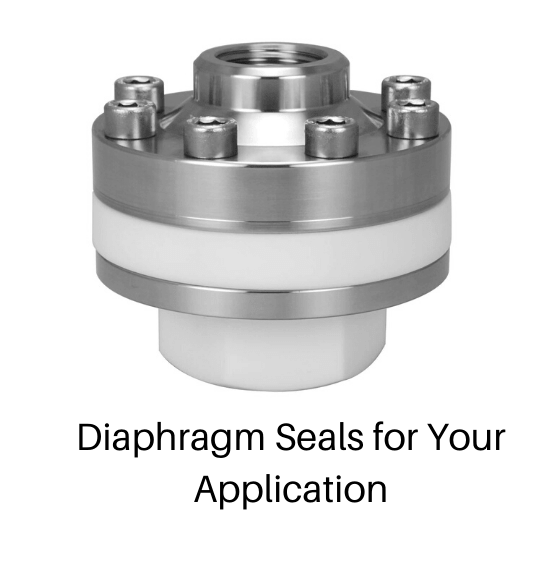Diaphragm seals are essential components used in conjunction with pressure transmitters, switches, and gauges across diverse industrial processes worldwide. These seals protect sensitive instruments from harsh environmental conditions, ensuring accurate measurements despite challenging circumstances. Despite being designed to endure demanding situations, these devices can occasionally fail due to contamination, corrosive substances, or extreme temperatures. By installing diaphragm seals made of flexible materials, a protective barrier is created, preventing damaging elements from affecting the equipment while still allowing pressure to pass through. Today, diaphragm seals are available in numerous configurations, making the selection process complex. This guide will help you navigate the key factors to consider when choosing diaphragm seals tailored to your specific application needs.
### Determining the Need for Diaphragm Seals
Not all applications necessitate the use of diaphragm seals. Before selecting a seal, it's crucial to evaluate whether your transmitter requires protection from the following conditions:
- High-temperature media
- Media containing suspended particles or solids
- Crystallizing or highly viscous media
- Corrosive substances
- Situations requiring overpressure protection
If your application involves any of these scenarios, incorporating diaphragm seals can significantly enhance the longevity and reliability of your pressure measurement devices.

### Additional Considerations When Selecting Diaphragm Seals
Once the necessity of diaphragm seals is established, further considerations come into play:
#### Type of Process Connections
Diaphragm seals connect to pressure measurement devices via different types of connections:
- **Threaded:** Utilizes male or female NPT threads for direct attachment.
- **In-Line:** Welded design, suitable for flow-through applications.
- **Flanged:** Uses flanges, available in flat face, raised face, or ring joint types, following ASME B 16.5 specifications.
- **Sanitary:** Ideal for hygienic applications, complying with Clean in Place (CIP) and FDA standards.
#### Connection Size of Instruments
Most diaphragm seals fit standard sizes like 1/2" and 1/4" NPT. Ensuring compatibility with your instrumentation is vital for seamless integration.
#### Process Composition
Both the lower housing and the diaphragm come into contact with the process medium. Therefore, selecting materials compatible with the medium is critical. If unsure about compatibility, consult the manufacturer for guidance.
#### System Fill Fluid
A variety of fill fluids are available, each with unique properties. Ensure chemical compatibility with the medium and opt for non-toxic options in sanitary applications.
#### Diaphragm Type
Diaphragm seals come in several designs:
- **Threaded:** Facilitates flush sealing and easy replacement.
- **Clamped:** Secures the diaphragm between housings, ideal for elastomeric materials.
- **Bonded:** Bonds the diaphragm directly to the housing, also suited for elastomers.
- **Welded:** Commonly used in metallic seals, where the diaphragm is welded to the housing.
#### Maximum Working Pressure
All seals have a maximum allowable working pressure (MAWP), typically indicated in PSI for inline and threaded seals or as a flange class for flanged seals. Always confirm the MAWP aligns with your system requirements.
#### Maximum Process Temperature Limits
Each component, including the seal, must withstand defined temperature and pressure limits. Considerations should extend to fill fluids, diaphragm materials, and housing materials. For flanged seals, ensure compliance with ASME B16.5 specifications.
### Final Recommendations
When purchasing diaphragm seals, it’s advisable to source from reputable suppliers. Companies like *The Transmitter Shop* offer a comprehensive range of pressure transmitters and related accessories, including diaphragm seals. Their expertise ensures you receive reliable products tailored to your needs. If you’re uncertain about any aspect of the selection process, reaching out to their specialists can provide clarity.
This guide aims to simplify the complexities involved in choosing the right diaphragm seals for your application. By carefully considering each factor discussed, you can make an informed decision that enhances the performance and lifespan of your pressure measurement systems.
---
For more insights into pressure measurement technologies, explore related posts such as "What Are Diaphragm Seals and Their Types?" or "How to Select Pressure Transmitters for Your Application?"
---
**Related Posts:**
- What Are Diaphragm Seals and Their Types?
- How to Select Pressure Transmitters for Your Application?
- Remote Seals: Significance, Working Principle & Applications
- HART Communication Protocol: Overview, Working Principle, Benefits in Industrial Automation
- Pressure Transmitters vs. Pressure Transducers: Learn the Differential Characteristics
- An Ultimate Selection Guide for Flow Transmitters
These resources offer valuable information to deepen your understanding of pressure measurement solutions.
Captain intelligent equipment co., ltd , https://www.2captain.com